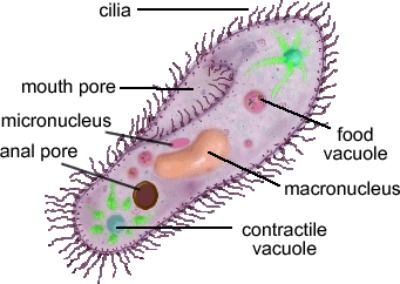Animal Like Protists Under Microscope
Make a wet mount of live amoeba in a depression slide well slide put a coverslip on top and then examine under the microscope. The algae are single celled plant like protists and the protozoans are single celled animal like protists.
 File Not Found Things Under A Microscope Protists Nature Pictures
File Not Found Things Under A Microscope Protists Nature Pictures
Although the algae has some plant like characteristics all protists mentioned above exhibit animal like movements except algae.

Animal like protists under microscope. You likely will see tiny animals like rotifers which belong to the kingdom animalia and of course there are the protozoans and algae which belong to the kingdom protista. Diseases that occur in plants and animals. Protozoa ciliophora sarcomastigophora apicomplexa phylum protozoa amoeba radiolarians.
Protists are any eukaryotic organisms that are not animals plants or fungi. This form of locomotion is used to identify to type of animal like protist. These protists exemplify the animal like and motile types of protozoans.
In which animal like protists move do locomotion. Amoebas pseudopods false feet. Heterotrophic filter feeds with cilia sessile attached to substrate plasmodium.
Protists can be classified into three major categories animal like plant like and fungus like. However many of these protists have very little in common with each other except for the presence or absence of chloroplasts and flagella. For most individuals the first images seen through the lens of a microscope are protists unicellular organisms that don t possess enough characteristics to be defined as purely plant or animal.
Animal like protozoa plant like algae and fungus like slime molds and water molds. Upside down and backwards like the. Protists were traditionally subdivided into several groups.
Causes african sleeping sickness. How does the letter p look under the microscope. The three protists examined in this lab are examples of protists that use specialized structures for locomotion.
Chapter 20 protists characteristics. When looking at protists under a microscope it is typically safe to assume that if the protists is moving and does not contain chloroplasts green in color then it will most likely be an animal like protist. Animal like protists these protists are animal like especially in their nutrition.
A protist with cilia and two types of nuclei. A type of protist characterized by great flexibility and the presence of pseudopodia. You might see bacteria which belongs to the kingdom monera.
Eukaryotic unicellular may be colonial or filamentous spirogyra and volvox animal like plant like or fungus like characteristics endosymbiotic theory animal like protists first animals classification is based on method of mobility four phyla. Learn vocabulary terms and more with flashcards games and other study tools. Notice its pseudopodia pseudo false and any internal organelles that are visible.
The organisms within the kingdom protista contain a nucleus like all eukaryotes and are categorized as plant like animal like or fungus like. Start studying microscope and protists.
 Protists Facts And Types Animal Like Plant Like Fungus Like Protists Biology Biology Corner
Protists Facts And Types Animal Like Plant Like Fungus Like Protists Biology Biology Corner
 Pin By Teresa Ennis On Kingdom Protoctista Protists Teaching Biology Ap Biology
Pin By Teresa Ennis On Kingdom Protoctista Protists Teaching Biology Ap Biology
 Hd Amoeba At 40x 100x 200x And 400x Microscope Slides Microscopic Celestial Bodies
Hd Amoeba At 40x 100x 200x And 400x Microscope Slides Microscopic Celestial Bodies
 Lab 2 Paramecium Protists Elementary Science Cell Membrane
Lab 2 Paramecium Protists Elementary Science Cell Membrane
 Hs Cells Life Science Middle School Protists Human Body Unit
Hs Cells Life Science Middle School Protists Human Body Unit
 Ciliates Animal Like Protists That Use Cilia For Feeding And Movement They Usually Reproduce Asexually By Mitosis A Protists Elementary Science Cell Membrane
Ciliates Animal Like Protists That Use Cilia For Feeding And Movement They Usually Reproduce Asexually By Mitosis A Protists Elementary Science Cell Membrane
 Kingdom Protista Protists Scientific Illustration Fun Science
Kingdom Protista Protists Scientific Illustration Fun Science
 Pin By Tk Perera On Kumara In 2020 Microscopic Photography Microscopy Art Biology Art
Pin By Tk Perera On Kumara In 2020 Microscopic Photography Microscopy Art Biology Art
 Paramecium Close Up View Under Microscope Organelles Vacuoules Vibrating Cilia Can Be Seen Paramec Bio Art Things Under A Microscope Science And Nature
Paramecium Close Up View Under Microscope Organelles Vacuoules Vibrating Cilia Can Be Seen Paramec Bio Art Things Under A Microscope Science And Nature
 Untitled Document Macro And Micro Nikon Small World Protists
Untitled Document Macro And Micro Nikon Small World Protists

Post a Comment for "Animal Like Protists Under Microscope"